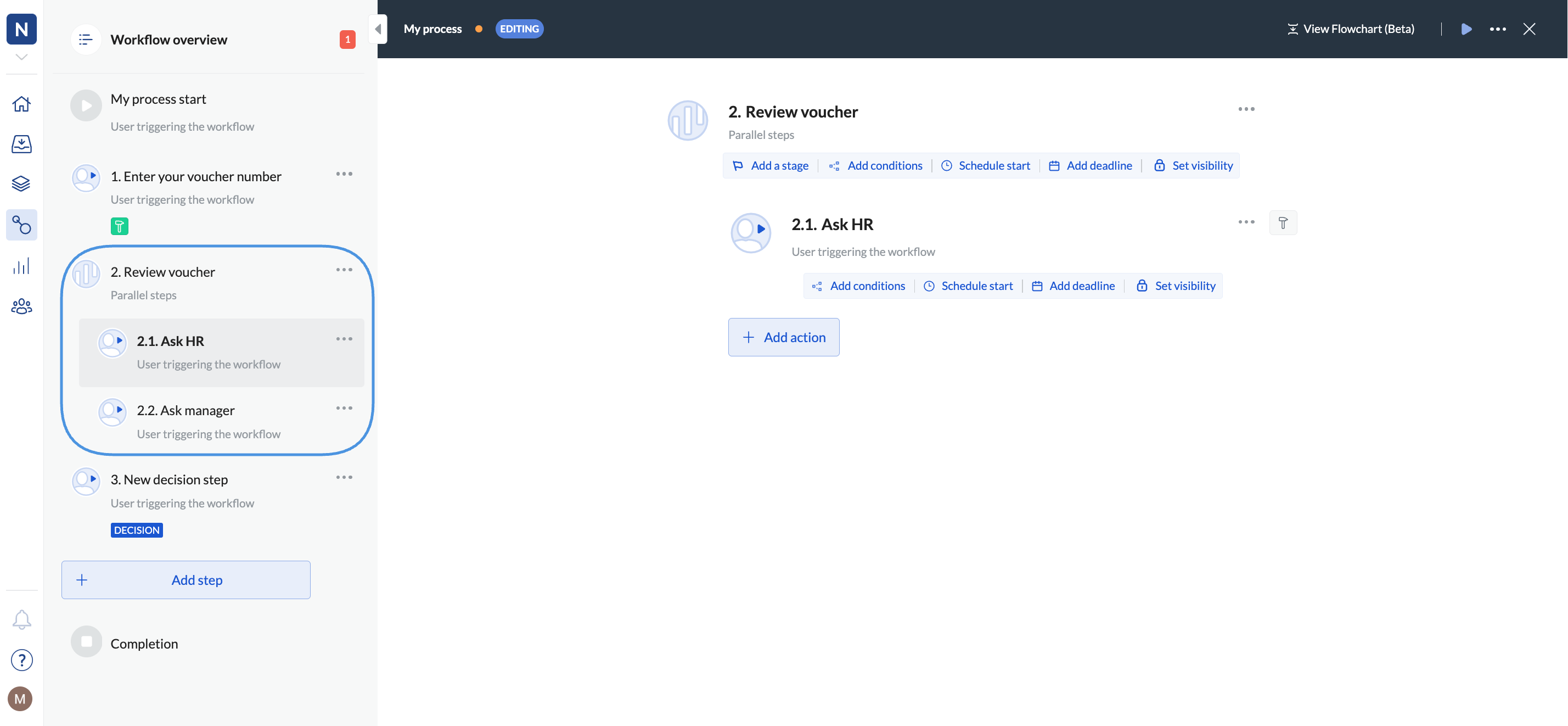To add a step in the workflow, click +Add step. Next, select your step type from the drop-down.
Best practices for steps
When creating steps, consider the following questions:
- Are tasks completed by the same person?
- Is the person familiar with Next Matter?
- Are the tasks to be completed around the same time?
Step types
Your step can be one of the following types:
Form step A basic step that consists of one or multiple form fields. Useful when a clear task needs to be done within the process. For example, Submit customer claim details.
Decision step (Tip: Now use the Routing button form field instead) A step that allows you to review information passed in the previous steps. You can approve the information and proceed to the next step or return to any previous step. For example, Approve customer claim.
Grouped step Use grouped steps to create a set of sub-steps that belong together. This way, if you want to set conditions to steps, you’ll be able to create conditions on multiple steps at once. You can create steps in a group or drag and drop any step into a group.
Parallel step This allows you to work on several steps in parallel. Useful when multiple teams can work in parallel or if there is no dependence between your steps. For example, Process customer claim can consist of Submit data to claims platform and Notify customer.
In the following example steps 2.1 to 2.4 will be run in parallel.
You can create parallel sub-steps by hovering over a step and clicking the plus icon or dragging and dropping any other step into the parallel group.
You can nest group steps inside parallel steps. This can help you create mini sub-workflows while still maintaining a clear and transparent structure. We support 2-level nesting (1.0 > 1.1 > 1.1.1).
Need a specific template? Let our Customer Success team know.
Group steps
Collect steps in a group if they are triggered by the same condition, they are interdependent, or the start date for these steps is the same. This way you can set the start date or create the condition on the parent step and build child steps underneath.
Single steps with multiple tasks
Sometimes you have multiple tasks that should be completed by the same person or team. In such cases build these tasks as tasks within the same step. This way users don’t get overwhelmed by multiple tasks and can complete everything faster. This is especially important when you build steps for external users who are not Next Matter experts.
Steps that need to be assigned to multiple users
If you need several users to collaborate on a step (for example, review its contents), you can do one of the following:
- Duplicate the step and assign it to the respective team member and group the steps as parallel steps. This way users will be able to start and review the step at the same time.
- Assign the step to a team instead of a specific person. This enables each team member to review the step contents and add comments as a Conversation tagging other users and re-assigning the step to the next user as soon as they are done. The users should Save the step as long as it’s being reviewed and the last person to review completes the step. Note that each user in this scenario needs to have the Team lead role as only those can re-assign the steps assigned to a team.


